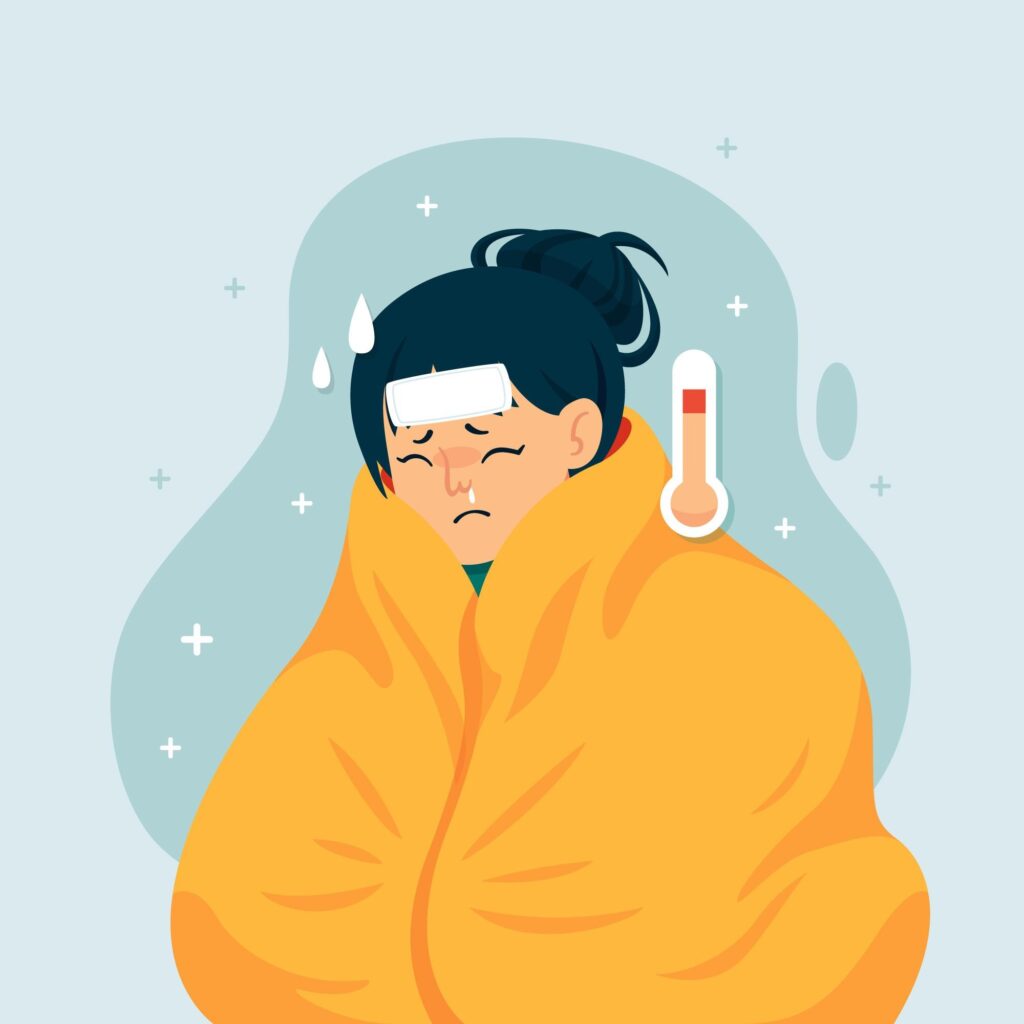Last updated on December 24th, 2024 at 12:28 pm

Typhoid fever treatment involves a combination of antibiotics to target and eliminate the Salmonella Typhi bacteria, which cause the illness. Supportive care, including hydration, fever management, and proper nutrition, is also provided to alleviate symptoms and prevent complications.
Completing the prescribed antibiotic course is essential for a full recovery. Typhoid fever is a serious infectious disease that primarily spreads through contaminated food and water. Without prompt and appropriate treatment, it can lead to severe complications and even prove fatal.
Typhoid Fever Diagnosis
The journey to effective treatment begins with a proper diagnosis. The symptoms of typhoid fever can be quite non-specific, often resembling other common infections. These symptoms may include a high fever, headache, abdominal pain, weakness, and a distinctive rose-coloured rash.
Given the overlap with other illnesses, it’s crucial to consult a healthcare professional for accurate diagnosis. Diagnostic tests such as blood cultures and stool cultures are vital in confirming the presence of Salmonella Typhi in the body.
Typhoid Fever Treatment
Once diagnosed, the cornerstone of typhoid fever treatment is the administration of antibiotics. Antibiotics are highly effective in killing the Salmonella Typhi bacteria, reducing the severity of symptoms, and shortening the duration of the illness. Commonly prescribed antibiotics for typhoid fever include ciprofloxacin, ceftriaxone, and azithromycin.
The choice of antibiotic may depend on factors like the patient’s age, local antibiotic resistance patterns, and individual medical history. It is crucial to complete the full course of antibiotics as prescribed by a healthcare provider to ensure complete eradication of the bacteria.

Typhoid Fever Supportive Therapy
In addition to antibiotics, typhoid fever supportive therapy often includes supportive care aimed at managing symptoms and preventing complications. Some of the key elements of supportive care are as follows:
- Hydration: Typhoid fever can lead to significant fluid loss due to diarrhoea and vomiting. Rehydration is essential to prevent dehydration. Patients may be encouraged to drink oral rehydration solutions or receive intravenous fluids.
- Nutrition: Maintaining proper nutrition is vital for a speedy recovery. Patients are advised to follow a balanced diet that is gentle on the digestive system. Dietary restrictions may be recommended in some cases.
- Fever Management: High fever is a hallmark symptom of typhoid fever and can be uncomfortable. Over-the-counter fever-reducing medications like acetaminophen (paracetamol) can help alleviate this symptom.
- Rest: Adequate rest is crucial during the recovery period. It allows the body’s immune system to better combat the infection.
Monitoring and Follow-up Care
Throughout typhoid fever treatment, healthcare providers closely monitor patients. This includes tracking the response to antibiotics, assessing hydration levels, and promptly addressing any potential complications. Even after completing the antibiotic course and feeling better, it is essential to attend follow-up appointments to confirm that the infection has been completely cleared from the body.
Read: What happens if we take Dolo 650 without Fever?
How long does Typhoid Fever last after treatment?
After receiving treatment, the duration of the illness can vary from person to person. In general, the course of typhoid fever after treatment typically follows a specific pattern:
- Early Improvement: Within a few days of starting antibiotic treatment, most patients experience an improvement in their symptoms. Fever tends to subside, and other symptoms such as abdominal pain and weakness begin to lessen. This initial progress is an encouraging indication that the therapy is having a beneficial impact.
- Full Recovery: The total duration of typhoid fever after treatment can range from about 7 to 14 days, depending on factors like the severity of the infection and the choice of antibiotics.Certain people might experience a swifter recuperation, whereas others might require an extended period for their recovery. It’s crucial to complete the full course of antibiotics as prescribed by a healthcare provider to ensure that the infection is completely eradicated from the body.
- Follow-up: Even after recovery from acute typhoid symptoms, patients should attend follow-up appointments with their healthcare provider. These visits help ensure that the infection has been fully cleared and that there are no lingering complications.
It’s important to note that while antibiotic treatment is highly effective in treating the acute phase of typhoid fever, individuals may continue to shed the bacteria in their stool for several weeks after recovery. This underscores the importance of maintaining good hygiene practices and following any additional guidance provided by healthcare professionals to prevent the spread of the disease to others.
> Consult a Doctor and Medkart will help you Order Medicines Online
Conclusion:
Typhoid fever treatment combines antibiotics and supportive care to combat this potentially life-threatening illness effectively. Early diagnosis, appropriate antibiotics, and diligent monitoring are key to a successful recovery. Nevertheless, prevention through good hygiene practices and vaccination remains the most effective approach to safeguard yourself and your loved ones from this infectious threat.
FAQs on Typhoid Fever Treatment
Q1. What is typhoid fever treatment?
Typhoid fever treatment typically involves a course of antibiotics to kill the Salmonella Typhi bacteria and supportive care to manage symptoms and prevent complications. Timely and complete antibiotic treatment is crucial for a full recovery.
Q2. How long does typhoid fever treatment usually last?
Typhoid fever treatment typically lasts for about 7 to 14 days, depending on the severity of the infection and the choice of antibiotics.
Q3. Can I stop antibiotics once my symptoms improve?
No, it’s essential to complete the full course of antibiotics as prescribed by your healthcare provider to ensure the complete eradication of the bacteria.
Q4. Is supportive care necessary during typhoid fever treatment?
Yes, supportive care, including hydration, fever management, and proper nutrition, is often needed to manage symptoms and prevent complications during typhoid fever treatment.
Related Links:
